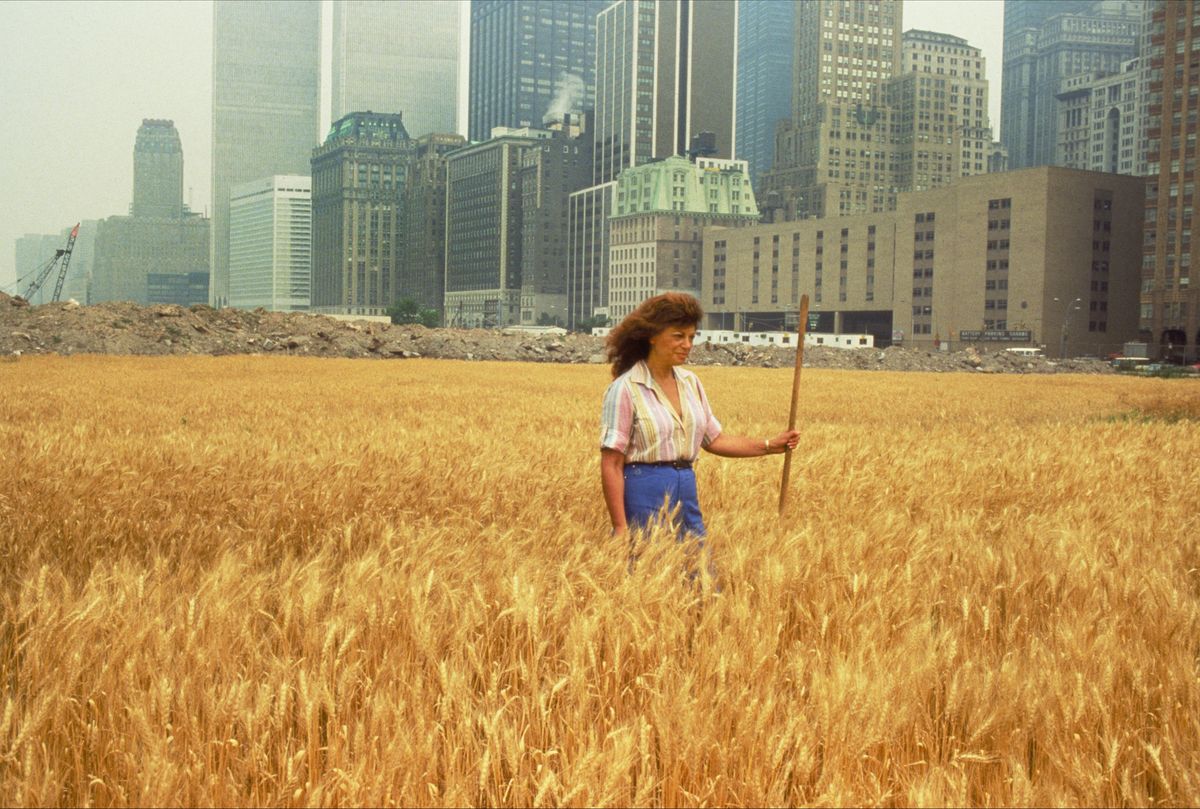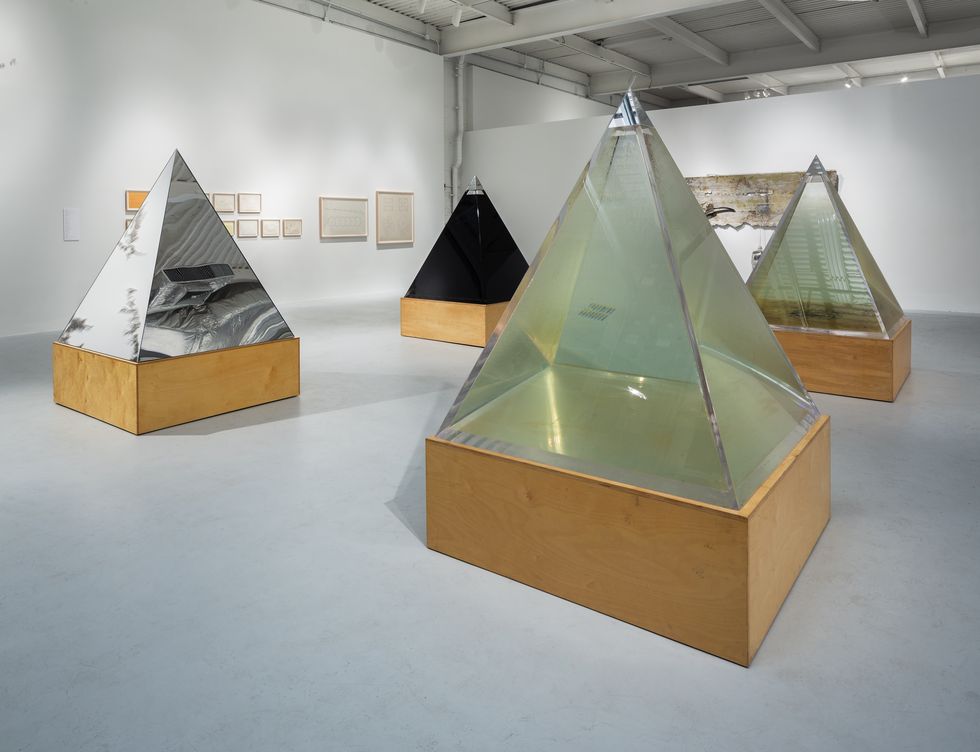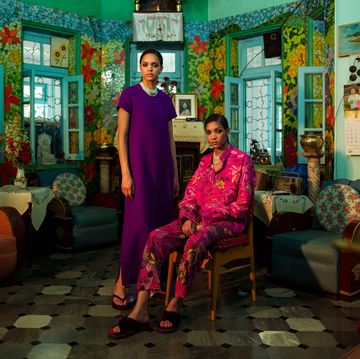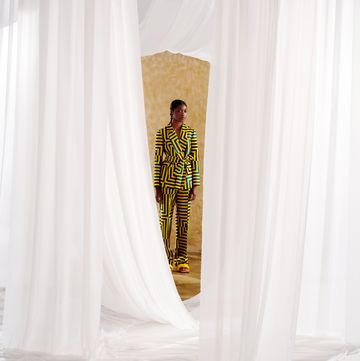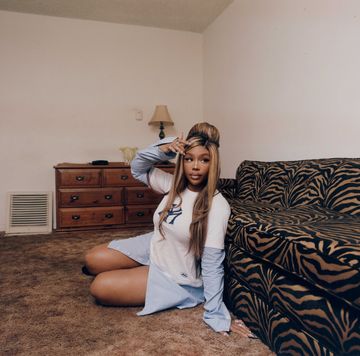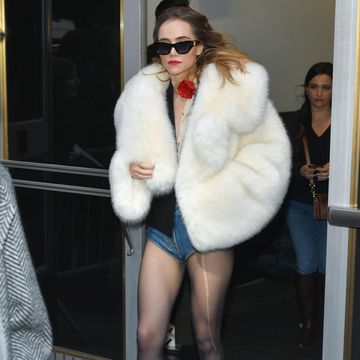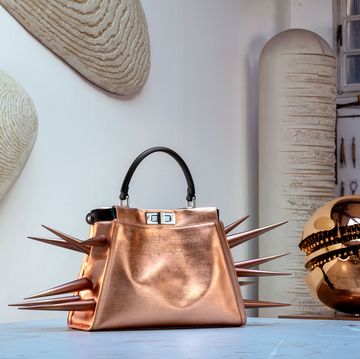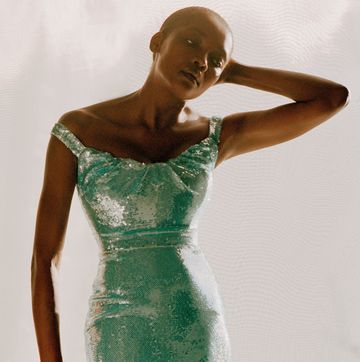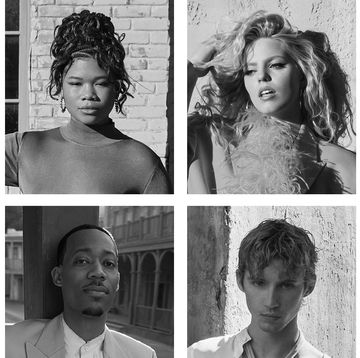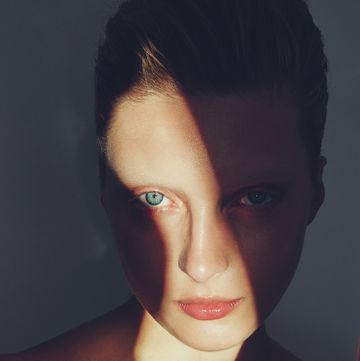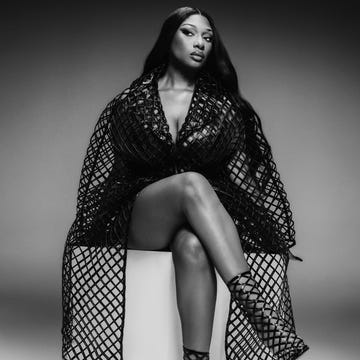In 1982, New York’s now über bourgeois Battery Park City was a landfill, described in the New York Times by the artist and polymath Agnes Denes as a pile of “garbage, tires, and old overcoats.” (Even worse, though, in her mind, was the nearby grift and graft of Wall Street.) So with a commission from the Public Art Fund, Denes transformed the two-acre field, carving furrows into the filth then planting and harvesting half a ton of golden wheat, all under the watchful eye of the Statue of Liberty. Denes named the project Wheatfield—A Confrontation. A photo of her standing mid-field, moving through the crops with a staff like a serene Angel of Death, is one of very few images of her in situ (more often, she’s behind the camera, documenting). “Most artists are in front of their work,” she says in the Soho studio she's rented since the 1970s. “I’m behind my art. In more ways than one.”
Fittingly, then, Agnes Denes: Absolutes and Intermediates, this fall’s long-overdue career survey mounted by the Shed in the city’s new Hudson Yards—itself a glittering outgrowth atop an active railyard—contains many confrontations and no self-portraits (it opens October 9). Among the exhibition’s nearly 150 works is Pyramids of Conscience, from 2005, which addresses the politics of water. (One pyramid is filled with clean water, another with polluted water; a third pyramid holds crude oil, and a fourth is wrapped in mirror.) The exhibition devotes a great deal of space to her unrealized projects, too, which rival both Leonardo Da Vinci and Buckminster Fuller in their unity of aesthetics, science and alchemy. And her realized projects feel more timely than ever.
More From ELLE

“Everything she does is insanely ambitious,” says Emma Enderby, the Shed’s curator. “She really was ahead of her time in thinking about how the way we live is going to have to drastically change. How do you design a future way of living?”
Denes has spent half a century doing just that, in libraries and laboratories and in her SoHo loft, itself a retrospective of her work with its stacks of monographs and correspondence and spotless takeout containers filled with small gray snail shells. Now 87, or 88, she can’t remember and doesn’t care to try, she sits ram-rod straight and speaks with force and an earned air of wariness that in a man, say Da Vinci for example, we’d call genius.
“He invented a lot of things,” she says, deadpan. “Which I do.” Then she laughs. This happens often in her conversation, accompanied by a side-eye that occasionally threatens to twinkle. “He is about what is yet to be invented, and I am re-evaluating what has been done, to find its meaning. That’s simplifying it. But that process of reevaluation made my art.”
Calling her work art might be simplifying it, too, as it takes in ecology, philosophy, linguistics, holograms, future scientific discoveries, and simple marks on paper. “When I started, I wanted to change the world. I wanted to re-evaluate human knowledge. Hmm, nothing to it,” she says and laughs. “I was naïve, I was inexperienced, but I had ideas. And that’s me. So I went for it.” Her Rice/Tree/Burial with Time Capsule, which she first realized in 1968, involved sowing rice and bits of haiku into upstate New York soil and chaining together the neighboring trees. In 1977, she re-enacted the work on a larger scale, with a half-acre rice field above the Niagara gorge whose harvest sprouted up mutated due to the ground’s proximity to Love Canal. From a ledge overlooking the Falls, she filmed the fields and trees she’d chained, which became covered in spiders; the ledge collapsed not long after she left.
In the years between, she helped found A.I.R., New York City’s first all-women gallery, and wrote A Manifesto, which Harvard this year reprinted as a scroll for students in its design department. “My work,” she says, “deals with the human dilemma, and offers benign solutions.” Study nature. Trust intuition. Seek expertise. Study more. The manifesto ends with the phrase persisting in the eternal search. Perhaps that’s a self-portrait, too.
As a child, Denes endured the Nazi occupation of her homeland, Hungary. She had a child of her own, but shrugs off sharing any personal details. She’s glad to have been spared the clamor of attention and celebrity, particularly as misogyny was largely its root. “My work would have been immediately hailed if I were a man, but I’m not lamenting that because I’m glad they didn’t understand me. The world celebrates you, chews you up, and spits you out. I did my work because I love humanity. I feel sorry for us. We’re screwed.”
Though not if she can help it. Denes is already looking to the next project, a new forest for New York City that will take centuries to grow. “I’m not in this century anyway,” she says. “I’m 200 back and 200 forward.” Paging through a monograph, she explains her drawings of isometric—and so in some ways at least mathematically equal—Earths shaped like the protective shells of snails. Eventually, the worlds swell with bright colors. “You see where the beauty comes in? There is the research, there is the information, and then it’s removed. And you get the beauty that’s left.”
This article originally appeared in the July 2019 issue of ELLE.
Jesse Dorris is a freelance writer based in Brooklyn.
